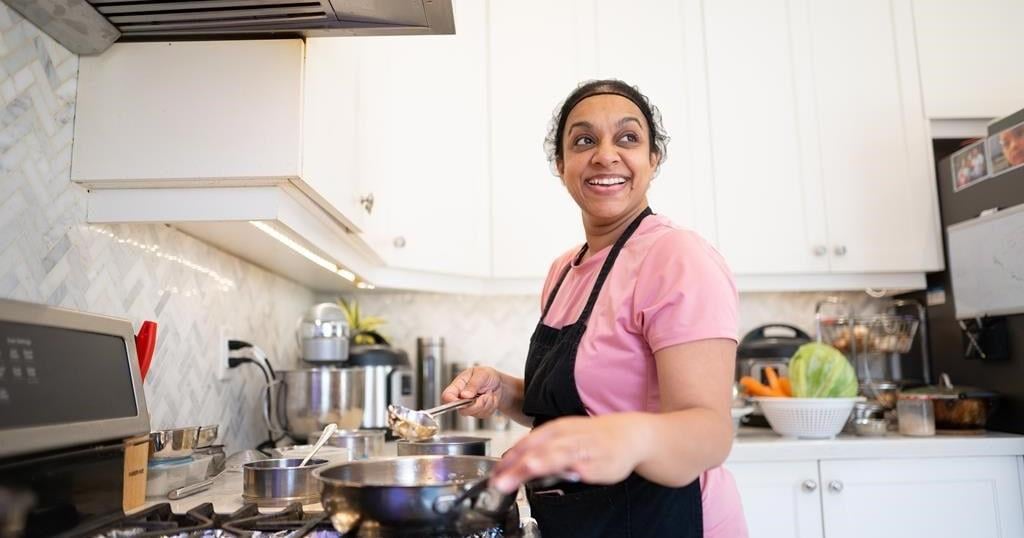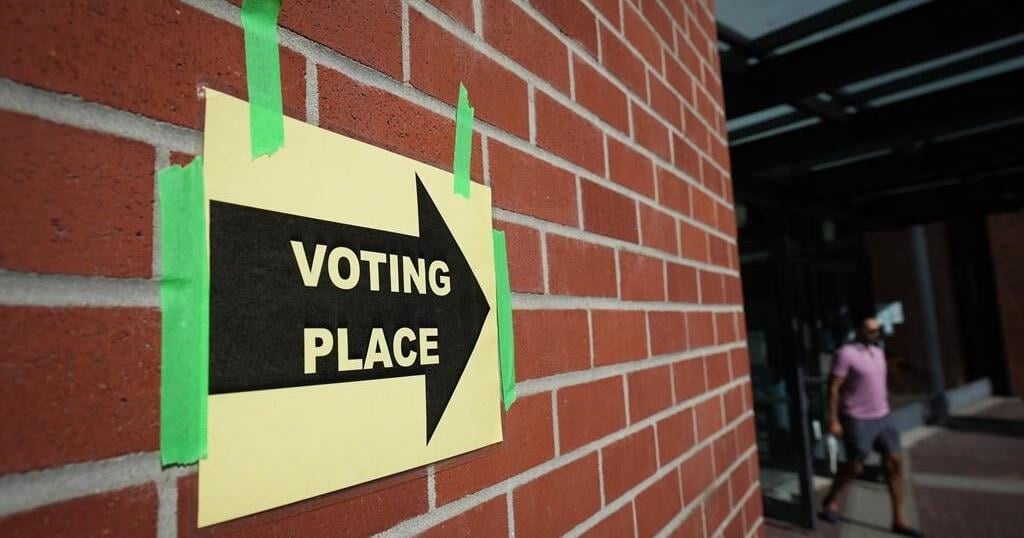BURLINGTON, ONT. – Yugali Bharote starts her day in the kitchen, preparing lunch boxes for her sons bound for school – but she doesn’t stop there. She then prepares almost a dozen lunch boxes for customers who have subscribed to her homemade meals.
Orders for the meals, or tiffins, were placed by 7 a.m. on a WhatsApp group or through order forms. And Bharote, donning a hairnet and gloves as she worked from her home kitchen in Burlington, Ont., faced a time crunch to get the orders done.
The lunch menu on this early October morning was Maharashtra-style dill lentils, black chickpea curry, rice, chapati, a sweet pudding and air-fried cutlets. By noon, aromas of her homemade dishes lingered in the air as she packed them in containers, all set for deliveries and pickups.
Tiffin, an old British word for a midday snack, is a packed meal for the lunch hour and gained popularity during the colonial era.
Now a widespread cultural service in countries like India, freshly cooked meals are traditionally delivered in stacked steel containers to people at their workplaces. In Canada, the practice is gaining popularity as more South Asian immigrants move to the country and crave meals similar to their mother’s cooking at an affordable price.
For Bharote, serving tiffins has helped her achieve a better work-life balance.
She had worked as a software developer for 17 years before being laid off. Looking ahead to what was next, Bharote figured she needed flexibility and the ability to spend more time with her family in her next job.
“My son, who will be going to university after one and a half years, I want to spend time with him,” Bharote said.
“Luckily, I’m getting the time very nicely with this (job),” she added.
Bharote received a food-handling licence and set up her tiffin business at home, focusing on Maharashtrian food — local to the central west coast region of India, and where she was born. She offers weekday lunch boxes for $12 each. On the weekends, the gig turns into a catering and party order business.
Salima Jivraj, client service director at Nourish Food Marketing, said demand for subscription-based homestyle meals has been popular in Canadian cities for a while, but has expanded as newcomers move to rural areas and smaller towns.
While there’s no official data available on home-based tiffin services, online platforms such as Facebook Marketplace and Kijiji are flooded with subscription-based ethnic meal options across smaller towns such as Sylvan Lake or Red Deer in Alberta or St. John’s, N.L., and Dieppe, N.B.
The main drivers for growing tiffin services are affordable prices and a taste from back home, Jivraj said.
“Subconsciously, when people are ordering tiffin service here, the emotion they’re stirring without even realizing is ‘We miss our families, we miss our homes. It’s our connection to the other world,'” she said.
But not all home-cooked meals are the same, Jivraj said. India’s culinary diversity has started to reflect in the growing tiffin industry in Canada.
“What we now have is the option of getting even more hyper-local, where you can literally get almost the same cooking as your mom,” she said. “That’s very special so that’s where I see how these tiffin services have an edge.”
Ritika Manwani moved to Canada with her family about three years ago. An early childhood educator by training, Manwani said she didn’t want to commute for work or be away from her children. Within a few months, she set up shop in her home west of Toronto in Mississauga.
“I have a passion to cook,” Manwani said. “So, I went ahead and started cooking, taking orders.”
Manwani spends almost five hours in the kitchen every morning, preparing and packing North Indian vegetarian lunches, which are then picked up by a distributor and delivered to about a dozen customers.
She sets her weekly menu over the weekend, with several trips to local grocery stores, Manwani said. Her goal is not to repeat any dishes — providing 20 different meals a month.
Manwani often gets calls from people who are looking for work, asking how to start their own tiffin business.
Selling home-cooked meals made from scratch has become an alternative income source for many new immigrants trying to settle in Canada’s economy as unemployment and the cost of living continues to rise.
Statistics Canada reported the jobless rate rose to 6.6 per cent in August as the labour market continued to weaken, with students and recent immigrants shouldering the brunt of the softness.
“These days, there are more sellers than customers,” said Shruti Shah, co-founder of tiffin marketplace TiffinStash. The platform connects vendors and customers across the Greater Toronto Area and has about 40 tiffin services listed on the network.
“Because sellers have grown, so has the competition.”
And some competition is also now coming from restaurants, Shah said.
“Restaurants have realized … all they have to do is to prepare standard meals and they can have this as an additional revenue channel,” she said.
“While there are a lot of new (entrants) in the market, at the same time, there’s a lot of sellers who are also moving out of the business because of competition and quality that they’re not able to maintain,” she said.
Shah said tiffin customers can range from busy working parents to international students to seniors looking for affordable takeout food options.
Most vendors entering the market sell home-cooked meals for cash or without registering their businesses to keep costs low, Shah said. Shifting operations to a commercial kitchen could prove to be a financial burden for a small-scale business.
Jivraj said it’s easier for people to set up an under-the-table business for tiffins since there aren’t many additional skills required other than cooking good food.
She said a quick online scan of tiffin services gives her the impression many of these businesses “fly under the radar.”
For many of these tiffin providers, there’s a sense that being a regulated food business would be too costly for the size of their operation. There are also barriers to getting the right information for many, she added.
Generally, when preparing high-risk foods such as meat and items that need refrigeration, commercial equipment is required, but for so-called low-risk foods such as baking, requirements are much more relaxed.
Jivraj suggests special safety regulations for these home-based businesses might be a good solution that would allow cooks to be able to operate from their kitchens while also allowing them to flourish.
Harry Swatch, a resident of Surrey, B.C., started his tiffin business in his garage in 2018 to supplement his income as a cab driver. A family business, Swatch’s mother cooked the meals while he took charge of deliveries and grocery runs six days a week.
“There were so many challenges,” he said.
His business grew to 150-200 tiffins per day and eventually had issues with limited space, neighbourhood complaints and pests, which required professional pest control.
Swatch then went legitimate. He leased a commercial-grade kitchen and got relevant food safety licenses, allowing him to operate at a larger scale. His business now provides almost 600 tiffins per day, he said.
For Bharote, cooking full time for family and others is a way to bring her older son closer to home before he moves out for school.
Seeing people liking their mother’s meals, Bharote said her boys have started appreciating traditional home-cooked meals over takeout, and learning more about their culture.
“I know this is something my kid will be missing when he goes (away),” she said.
This report by The Canadian Press was first published Oct. 6, 2024.





















